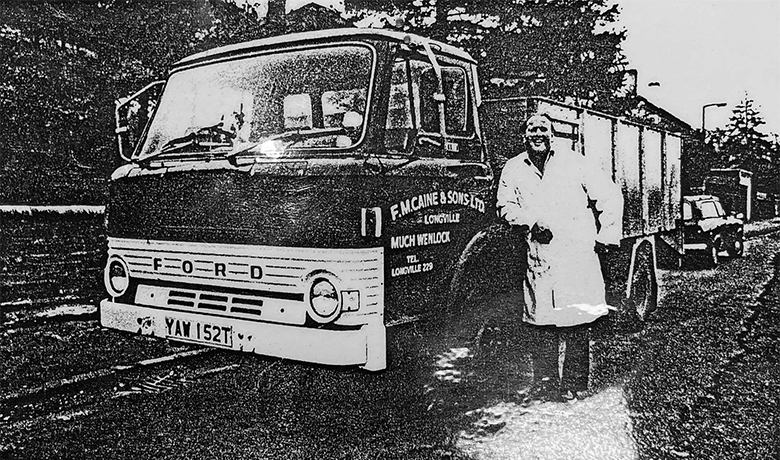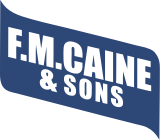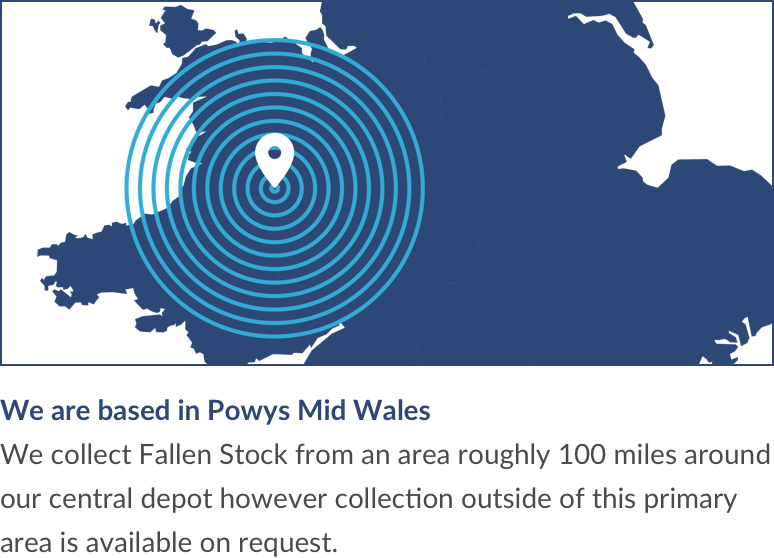Latest News From F M Caine
Updates and news about our stock collection

A brief history the knackering industry
Knacker’s yards have been in operation for hundreds of years. In fact, our great, great grandfather, Michael Caine, started what is now F.M Caine and Sons in 1919 after returning from the Great War. Upon his return, a local man offered him his business, only asking for £10 for the horse and cart. Another businessman paid the £10 in recognition of our grandfather’s service for King and Country and he then began working around the Longmynd in Shropshire. Traditionally, the Knackerman travelled about by horse and cart, collecting sick, injured, or deceased animals for disposal. Many of the collections were horses, as most people owned and used them as working animals and they were the main form of transport.
In the past, the Knackerman would actually pay the owner of the dead animal for the carcass and make their money by selling on the valuable parts of the carcass. In villages across the country, the local knacker yard would strip and process the carcass to supply many useful things to the local community. For example, horse oils were saved and boiled up to create Neatsfoot oil, which would be used to soften leather or to condition wooden cricket bats. Suitable bones would be collected and sent to knife manufacturers to make handles. The meat from the collected animal would be sold for pet food and the remaining bones and waste were boiled to remove all the fat, which were then sold as tallow for soap, lipsticks, candles and the like. The animal hides were sent to the local tannery to make leather goods, and fleeces could be made into rugs. Anything left over would be ground up and sold as fertilizer. While sustainability might be a newish buzzword, the concept of nothing going to waste is the foundation of the Knacker business, and many of these processes continue into today!
Over time, changes in society triggered reform in how Knackermen operate. One massive change was the introduction of the motor vehicle. As motorised transport became more affordable, Knackermen weren’t limited to collecting in a radius covered via horse and cart. While this was good news for some businesses, it forced others into closure. Many local Knacker yards stopped processing carcasses because large companies from further afield were now able to collect from farmers or take the bones and more valuable parts of fallen stock from slaughterhouses, meaning it wasn’t viable for smaller businesses to process what was left.
Political changes also had an impact. In 1938, Section 57 of the Food and Drugs Act (1938) triggered reform in the business of fallen stock collection. The Act set out new licensing and inspection requirements for operating a Knacker yard. Ten years later, parliament debated the issue of Knacker’s yard licensing as there was an increasing problem with ‘black market’ operators illegally selling horse meat. Following this, licensing became stricter, and more documentation was needed for traceability.
Biohazard events and animal disease have also shaped the industry. In the early 1990s, Knacker yards - or Fallen Stock Collectors - were overwhelmed by the BSE (bovine spongiform encephalopathy) epidemic. Thousands of cows were slaughtered to contain and prevent the spread of the devastating disease. The BSE crisis was a difficult time for F.M. Caine and Sons, as it was for all in the agricultural sector. For a period, the government shut down the operations of Fallen Stock Collectors and it did not look as though it would end well for many, including ourselves. Eventually, the powers that be decided to task rendering companies with clearing the vast numbers of biohazard stock waste left behind by culls. In our case, we supported the rendering companies by making bio-safe collections from the farms they could not access.
After BSE, many Knackermen (including ourselves) were better prepared for biohazard events, so when the Foot and Mouth epidemic arose in 2001 we worked with government agencies to support managing diseased stock in a way that kept other animals and people safe. Since 2001, testing for BSE has been mandatory on any bovine animal over the age of 48 months. F.M. Caine’s are licensed and certified to do BSE testing, which we complete daily at our premises. We also carry out Scrapie and TSE testing on sheep and goats.
In light of the increased frequency of disease threats to the agricultural industry, we invested in training staff as ADR drivers in 2020. This means we can handle high risk materials that need advanced biohazard controls in a much safer way. This is another example of how we at F.M. Caine and Sons - and the industry as a whole - have evolved with additional requirements and governance put in place to ensure the safety and security of British livestock.
As the world moves forward with carbon reduction measures and more sustainable practices, we keep calm and carry on with the ‘nothing goes to waste’ ethos that has served us well for over 100 years. Though it now happens at different sites with improved technology (and comes with a LOT more paperwork), what we do is fundamentally the same. Animals that we have collected that pose no risk to humans or other animals are sent to be rendered. 99% of the carcass is used to create useful products that create pet food, fertilizer and biofuels. Animals that carry a biosecurity risk are destroyed according to government specifications.
While our great, great Grandfather might not recognise the site and vehicles today, he’d be proud that his legacy lives on in the business we’ve continued to build and the industry that we are part of.

